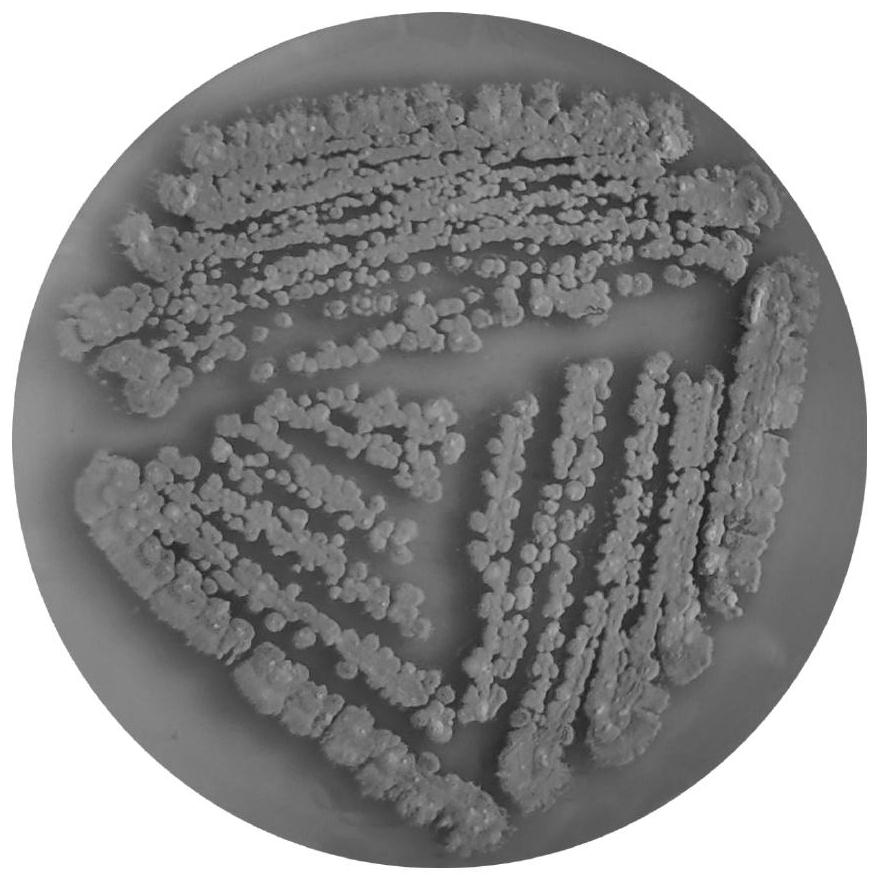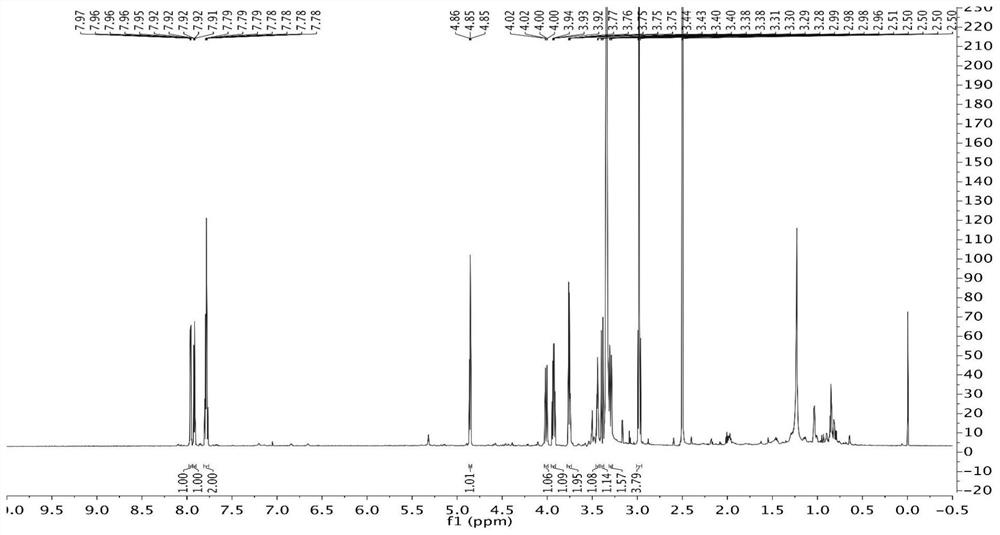Sponge-derived actinomycete and preparation method and application of novel sulfur-containing alkaloid produced by sponge-derived actinomycete
A technology of alkaloids and drugs, applied in the field of preparation of two new sulfur-containing alkaloids dassonmycins A and B, which can solve problems such as being unable to walk by oneself
- Summary
- Abstract
- Description
- Claims
- Application Information
AI Technical Summary
Problems solved by technology
Method used
Image
Examples
Embodiment 1
[0033] 1. The inventor collected the Petrosia sp. sponge sample from the shallow seabed (-20 meters) near Yongxing Island in the South China Sea. After surface disinfection with ethanol, the sponge was ground using a homogenizer, and some of the ground samples were inoculated in the non-woven fabric by imprinting. Bacteria ISP2 agar plate (each 1 liter medium contains 4.0g of yeast extract powder, 4.0g of glucose, 5.0g of malt extract powder, 500 microliters of multivitamins, 30.0g of sea salt, 20.0g of agar powder, pH 7.0, sterilized at 115°C Bacteria for 30 minutes); another part of the crushed sample was washed with sterile water, and the supernatant was diluted and coated on a sterile ISP2 agar plate. Afterwards, the ISP2 agar plate was placed in a 28°C incubator for cultivation. From the bacterium colonies grown on the flat plate, the bacterial strain with actinomycetes morphology was picked for further separation and purification, thereby obtaining Nocardiopsis dassonvil...
Embodiment 2
[0046] Embodiment 2: the mensuration of the antibacterial activity of compound 1 and 2
[0047] The effect of compounds 1 and 2 on six indicator bacteria, Micrococcus luteus SCSIO ML01, Bacillus subtilis 1064, Staphylococcus aureusATCC 29213, methicillin-resistant Inhibitory activity of Staphylococcus aureus (methicillin-resistant Staphylococcus aureus shhsA1), Enterococcus faecalis (ATCC29212), Vibrio alginolyticus. The 6 indicator bacteria were cultured on a shaker at 37°C and 200rmp for 16 hours, diluted with sterile medium until the OD value (600nm) was 0.04-0.06, then diluted 10 times and added to a 96-well plate; after adding the sample, dilute to Final concentration 64-0.125μg mL -1 , 3 parallels for each concentration; incubate at 37°C for 18 hours, measure the absorbance of each well with a microplate reader, and determine the minimum inhibitory concentration (MIC) of each compound. Trimethoxybenzidine (TMP) was used as a positive control, and the results are shown ...
Embodiment 3
[0052] Example 3: Determination of Compound 1 and 2 Antitumor Activity
[0053] The inhibitory activity of compounds 1 and 2 on four tumor cell lines SF-268, HepG2, MCF-7 and A549 was determined by SRB method. The four tumor cell lines were cultured in RPMI medium, and 180 μL of the culture (concentration of 3×10 4 cells per mL) into a 96-well plate at 37°C in 5% CO 2 Incubate for 18 h; add 20 μL of the sample to be tested (final concentration is 1, 10 and 100 μM, solvent is DMSO) into the corresponding wells of the 96-well plate, use DMSO as a negative control, do 3 parallels for each concentration, and continue to culture for 72 Add 50 μL of 50% trichloroacetic acid to mix, then add 0.4% SRB (dissolved in 1% acetic acid) and let stand for 30 minutes; remove the supernatant, dissolve the protein bound to the dye in 200 μL of 10 mM Tris buffer, The OD value (570nm) of each well was measured with a microplate reader, and the corresponding IC was calculated by the method of no...
PUM
 Login to View More
Login to View More Abstract
Description
Claims
Application Information
 Login to View More
Login to View More - Generate Ideas
- Intellectual Property
- Life Sciences
- Materials
- Tech Scout
- Unparalleled Data Quality
- Higher Quality Content
- 60% Fewer Hallucinations
Browse by: Latest US Patents, China's latest patents, Technical Efficacy Thesaurus, Application Domain, Technology Topic, Popular Technical Reports.
© 2025 PatSnap. All rights reserved.Legal|Privacy policy|Modern Slavery Act Transparency Statement|Sitemap|About US| Contact US: help@patsnap.com



